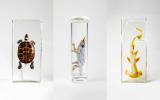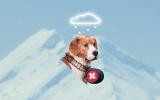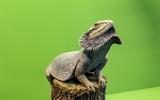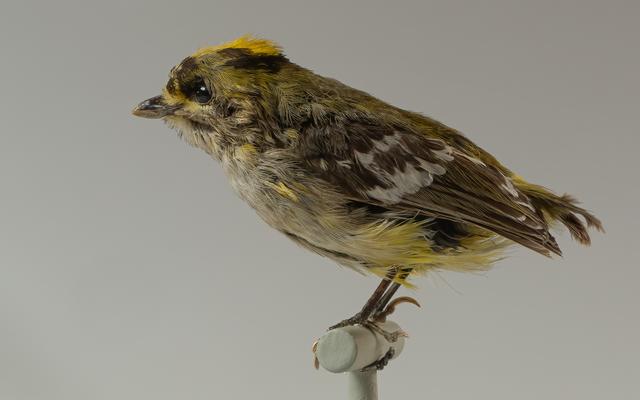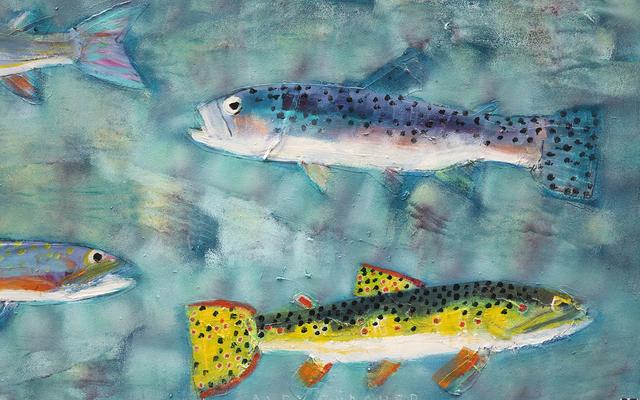Our scientific collections consist of 6.5 million objects – they are the heart of the museum. They are stored in our cellar in climate-controlled and bomb-proof rooms. Although these precious treasures are well protected, they’re also inaccessible to the museum guests. The permanent exhibition «Cabinet of Curiosities – The display collection» brings part of the «wet collection» into the light of day and shows its unbelievable breadth. Over 15,000 jars stand on ceiling-high shelves. They contain 19,000 objects, including iguanas, fish, crocodiles, penguins and insects, not to mention a unique collection of eyes. This exhibition is unique in Switzerland. The Cabinet of Curiosities attracts visitors with its whimsical aesthetic and captivates them with its diversity. It is a natural history collection, research site, archive of life, and not least – a testament to the most pressing issues of our time.
«Pickled animals» – what are they for?
Species extinction, habitat loss and climate change are the driving topics of our time. But it’s impossible to engage with them scientifically without natural history collections. These collections alone provide the necessary foundation for answers, evidence and research. They allow us to observe the development of species diversity over time and furnish the only evidence of the existence of extinct animal species. Accurate knowledge of changes in biodiversity – the diversity of life – is indispensable to protecting it. We can only protect what we understand.
Research lab in the exhibition
The preserved specimens in the Cabinet of Curiosities are not only exhibits, but also important research objects. They form a foundation for many research questions, such as changes in biodiversity, identification of new species, and effects of climate change on ecosystems. To answer questions like these, objects are used to build tissue sample collections and perform DNA analyses. In the Cabinet of Curiosities, two glass windows allow a view into a laboratory where researchers isolate DNA from tissue samples – live!
The art of preservation
Death is an inexorable part of life and brings with it the disintegration and decay of organisms. This makes preserving the objects a special challenge, since it is precisely this natural process that must be stopped – and that for several hundred years. Preservation in fluids like alcohol may protect the body and DNA, but dulls the colours of skin, hair, and scales and makes the specimens look unsightly. Formalin, on the other hand, preserves the colours of skin, hair, and scales, but the fluid is highly toxic and destroys the DNA. Today, however, modern methods of preservation enable the protection of as many characteristics of the organism as possible. Proper preservation of natural history collections is also a service to future generations, since the information retained may be able to answer questions in the future that we haven’t even thought of today.
A unique world of Swiss fish
A natural history collection is never complete. Our Cabinet of Curiosities, too, is always changing: newly collected objects are added; others migrate to the lab for a while or are loaned to other museums for purposes of research or exhibitions. The fish section of the Cabinet of Curiosities is an active research collection of this kind. The last ice age formed the Swiss landscape as we know it today. The lakes created at that time are unique ecosystems, yet surprisingly little is known about the world of Swiss fish. Historical collections and current research document this extraordinary diversity at different points in time. Thanks to this interplay, we can study changes in this diversity – an indispensable tool for protecting it.
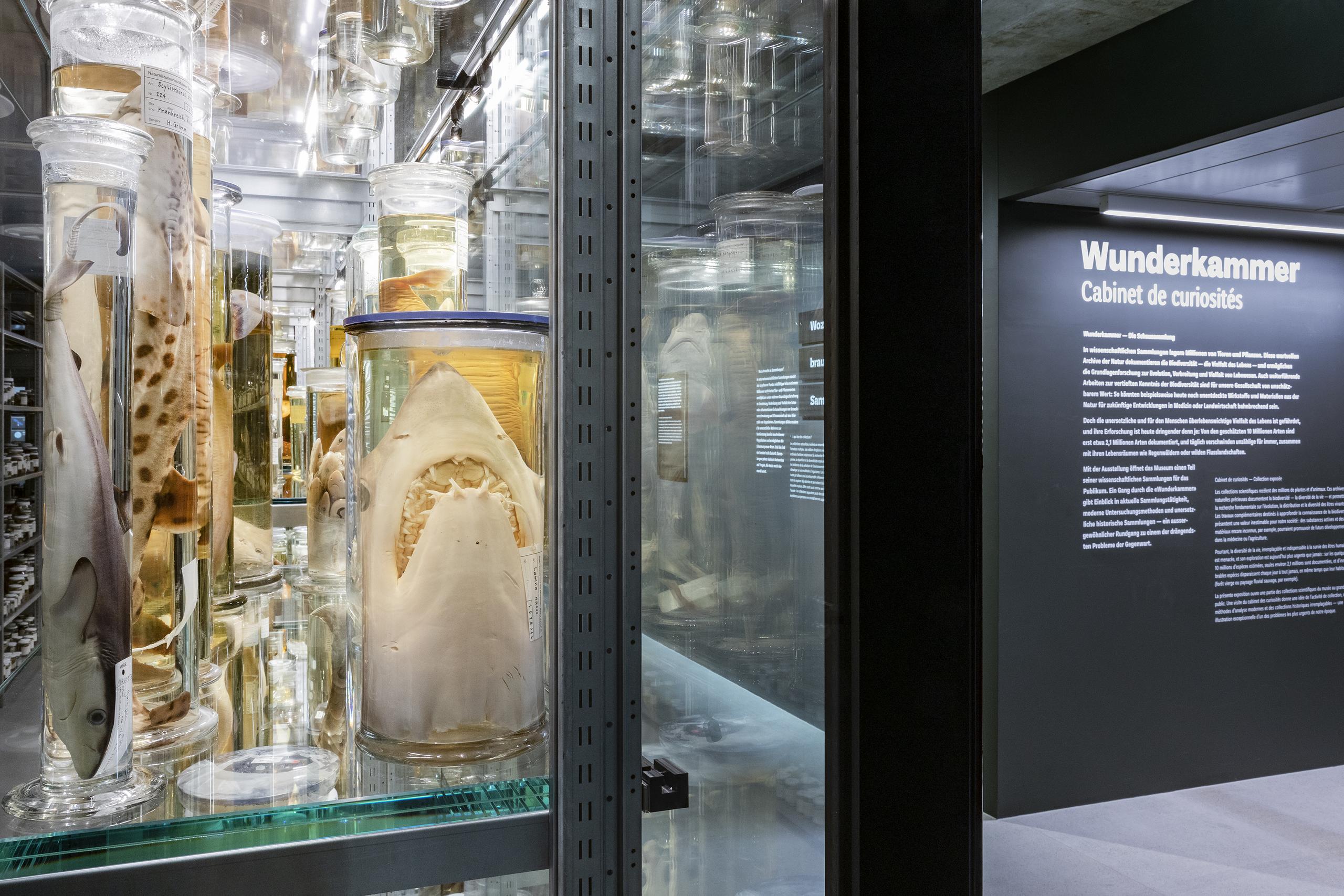
The unique Swiss fish diversity is fragile. Roughly half of all native fish species are endangered. A census of fish species in Swiss bodies of water should help protect the diversity of species and their habitats. For that reason, the research projects Projet Lac and Progetto Fiumi – a collaboration with the aquatic research institute Eawag, the Federal Office for the Environment (BAFU), and the Natural History Museum of Bern – systematically collected fish in Swiss waters over the years 2010–2018. Around 20,000 of these specimens now constitute the national reference collection of the museum. They are the foundation for current and future research about Swiss lakes and their biodiversity.
This historical collection is one of the museum’s most valuable. It comprises a broad archive of Swiss fish from the years 1871–1953. Water pollution increased rapidly from the 1950s, reaching a high point in the 1970s. It was caused by, among other things, inadequate sewage treatment plants, slurry and new phosphate-containing detergents. The effect on species diversity in Swiss lakes was fatal. The Steinmann-Eawag Collection is an archive of Swiss fish species before this destructive intrusion into their habitats. As one of only a few such reference collections, it is irreplaceable to Swiss fish research. The historical collection was almost lost, but has been protected from degradation by careful restoration work in recent years.
But what do other ambitious collectors collect? We have asked.
NMBE
With the kind support of
Teaching material (in German only)
Exhibition credit
- Gesamtleitung
-
Christoph Beer
- Projektleitung
-
Erich Stettler
- Konzept
-
Stefan T. Hertwig, Lukas Rüber, Dora Strahm, Katharina Weistroffer
- Szenografie
-
Katharina Weistroffer
- Wissenschaftliche Kuration
-
Stefan T. Hertwig, Lukas Rüber
- Ausstellungskuration
-
Dora Strahm
- Präparation und Objekteinrichtung
-
Robin Böhmer, Joël Gruben, Reto Hagmann, Constantin Latt, Matteo Messina, Fabian Neisskenwirth, Emanuel Ritzmann, Martin Troxler
Produktion (alphabetisch)
- Animationssfilm und Infografiken
-
YK Animation Studio: Fela Bellotto, Thomas Hirter, Etienne Kompis, Emilia Lamm, Joder von Rotz, Sebastian Willener, Lorenz Wunderle
- Ausstellungsfotografie
-
Nelly Rodriguez
- Bauten und Technik
-
Christian Bähler, Mark Bähler, Salvador Diez, Markus Holzer, Reto Küng, Denise Mast, Stepan Schlup, Thomas Schmutz, Julian Wüthrich
- Beleuchtung
-
Mica Ostermeier (matí AG)
- Bildnachweise (Fische)
-
Carmela Doenz, Jörg Freyhof, Andreas Hartl, David Marquez, Meta Povž, Michel Roggo, Ole Seehausen, Oli Selz
- Bildnachweise (Infogratik Intro)
-
Bildlizenzen von Shutterstock.com
- Bildnachweise (Schweizerkarte)
-
Bundesamt für Landestopografie
- Bildung und Vermittlung
-
Martin Ryser
- Grafik
-
Jonas Oehrli
- Lektorat und Korrekturat
-
Elsa Obrecht
- Marketing und Kommunikation
-
Sonja Delz, Anna-Pierina Godenzi, Patrizia Jaeggi
- Sponsoring
-
Sonja Delz, Lukas Rüber, Erich Stettler
- Sprecherinnen und Sprecher
-
Manuela Biedermann (D), Geneviève Bonnard (F), James Macsay (E)
- Texte und Storyboards
-
Dora Strahm, wissenschaftliche Begleitung: Stefan T. Hertwig, Lukas Rüber
- Übersetzungen Französisch
-
Henri-Daniel Wibaut, Tania Brasseur Wibaut
- Übersetzungen Englisch
-
Maura Calzada, Lukas Rüber, Supertext AG
- Wissenschaftliche Beratung
-
Peter Bartsch (Museum für Naturkunde, Berlin), Hannes Baur, Christian Kropf, Eike Neubert, Manuel Schweizer, Ole Seehausen (Institut für Ökologie und Evolution, Universität Bern und Eawag)
We would like to thank the Museum Society of the Natural History Museum as well as all participating licences and lenders and all persons and institutions who contributed to the success of the exhibition.
